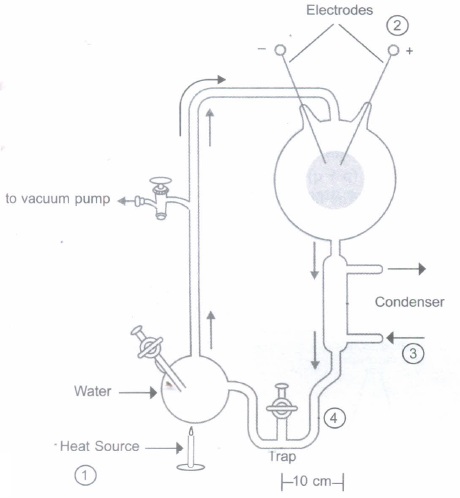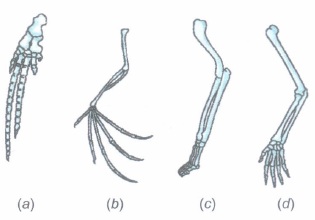CBSE 12th Standard Biology Subject Evolution Case Study Questions With Solution 2021
By QB365 on 21 May, 2021
QB365 Provides the updated CASE Study Questions for Class 12 Biology, and also provide the detail solution for each and every case study questions . Case study questions are latest updated question pattern from NCERT, QB365 will helps to get more marks in Exams
QB365 - Question Bank Software
CBSE 12th Standard Biology Subject Evolution Case Study Questions With Solution 2021
12th Standard CBSE
-
Reg.No. :
Biology
-

(a) State the hypothesis which S.L. Miller tried to prove in the laboratory with the help of the set up given above.
(b) Name the organic compound observed by him in the liquid water after running the above experiment.
(c) A scientist simulated a similar set up and added CH4, NH3 and water vapour at 800°C.
Which important component is missing in his experiment?(a) -

The forelimbs of four vertebrates are shown in the diagram shown above.
(a) What type of evolution is exhibited by the similarity among these organs in those organisms?
(b) What are such organs known as?
(c) What do they indicate?(a) -
In 1950s, there were hardly any mosquitoes in Delhi. The use of the pesticide, DDT on standing water
killed their larvae. But, now there are mosquitoes because they have evolved DDT-resistance through the interaction of mutation and Natural selection. State in a sequences, how that could have happened.(a) -
When the reptiles came down, mammals took over the earth. There were mammals in South America, which resembled some of the modern day mammals. But due to continental drift, they disappeared whereas the pouched mammals of Australia flourished and evolved into the various forms of pouched mammals that we see today.
(a) Mention two characteristic features that were the reasons for the successful existence of mammals on earth.
(b) Why did the continental drift affect the mammals of South America and Australia, differently.(a) -
According to Hardy-Weinberg principle, the allele frequencies in a population are stable and remain constant through generations. When the frequency differs from the expected values, the difference indicates the extent (direction) of evolutionary change. Disturbance in the genetic equilibrium or Hardy-Weinberg equilibrium in a population can be interpreted as resulting in evolution.
(a) Write the algebraic equation representing Hardy-Weinberg equilibrium.
(b) List the five factors that affect the genetic equilibrium.(a)
Case Study Questions
*****************************************
CBSE 12th Standard Biology Subject Evolution Case Study Questions With Solution 2021 Answer Keys
-
(a) S.L. Miller tried to prove the hypothesis of Oparin and Haldane; it is as follows:
(i) The first from oflife could have come from the pre-existing non-living organic molecules like RNA, proteins, etc.
(ii) Formation oflife was preceded by chemical evolution that resulted in the formation of diverse organic molecules from inorganic constituents.
(b) Amino acids.
(c) Hydrogen is missing. -
(a) Divergent evolution.
(b) Homologous organs.
(c) Homology indicates common ancestry. -
(i) There were some larvae with a mutated gene that conferred resistance to DDT.
(ii) The DDT-resistant larvae survived while the others died.
(iii) The DDT-resistant larvae reached adulthood and reproduced in large numbers.
(iv) The progeny also consisted mostly ofDDT-resistant larvae.
(v) Natural selection operating over a number of generations, favoured the DDT-resistant mosquitoes to reproduce in large numbers.
(vi) Hence, today there is a large number of mosquitoes that are resistant to DDT. -
(a) (i) Most of the mammals were viviparous and protected their unborn young ones inside the mother's body.
(ii) With increased brain size, they became intelligent in sensing and avoiding danger.
(b) (i) Due to continental drift, when South America joined North America, the South American mammals were overridden by those of North America.
(ii) But Australia became separated and due to lack of competition from any other mammal, the pouched mammals flourished and evolved. -
(a) (p + q)2 or p2 + 2pq + q2 = I.
(b) The factors include:
(i) Gene migration/gene flow
(ii) Genetic drift
(iii) Mutation
(iv) Genetic recombination
(v) Natural selection .
Case Study Questions






































